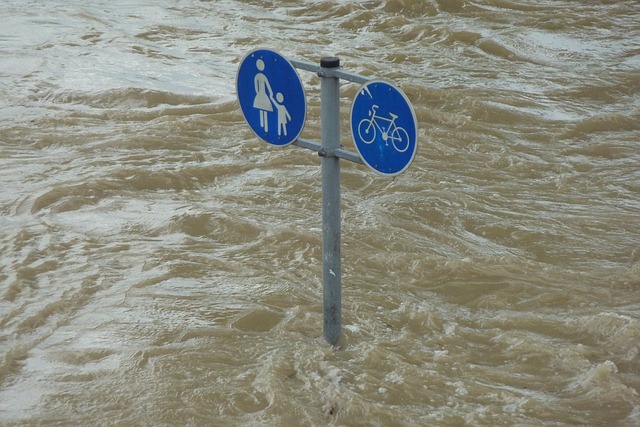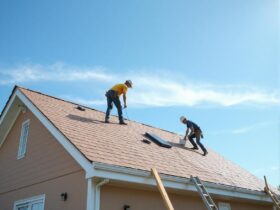Protecting your residential property from floods is especially pertinent if you reside in an area prone to such disasters. In San Antonio, understanding the local flood risks and knowing how to protect against flood can make a significant difference when it comes to safeguarding your home and community. By taking proactive steps and implementing tried-and-true measures, you can reduce the impact that flooding has on your property and loved ones.
Introduction
Protecting against flood may not be on your priority list if you live somewhere like an apartment or a dorm. However, if you live in a residential area prone to these disasters, it’s something you must consider.
One of the initial steps in flood preparedness is to assess your property’s vulnerability and make structural improvements where necessary. This could include elevating critical utilities such as the furnace, water heater, and electric panel if your home is situated in a high-risk flood zone. It is also wise to look into improving water runoff and drainage around your property to ensure water flows away from the foundation.
Consider consulting professional services to schedule a free plumber estimate in San Antonio for advice on installing check valves and other flood-proofing modifications in your plumbing system. In addition to structural adjustments, stay informed about local flood emergency systems and participate in community flood preparedness efforts.
These measures, coupled with a sound emergency plan, can empower you to minimize flood damage and recover more quickly when water levels rise.
Understanding Flood Risks and Preparation
To effectively protect your residential property in San Antonio from floods, it’s crucial to understand your specific flood risks and take well-informed preparation steps.

Identify Your Flood Risk
Bexar County, including San Antonio, has varying topography which affects flood risks. Utilizing the Flood Insurance Rate Map (FIRM) provided by FEMA, you can pinpoint your property on the floodplain map to assess whether you are in a high-risk flood zone.
It’s important to consider the history of 100-year floods in your area, as these events have a 1% chance of occurring in any given year but can cause significant flood hazards.
Flood Insurance Essentials
If you reside in a designated floodplain or risk zone, purchasing a flood insurance policy is a critical step. Speak with an insurance agent to understand the details of coverage and ensure that your assets are protected.
Flood insurance premiums may vary, so it’s beneficial to shop around and determine what level of coverage matches your needs – remember, standard homeowner’s policies often do not cover flood damage.
Preventive Measures for Property Protection
Beyond insurance, you can take proactive measures to safeguard your home:
- Maintain proper drainage systems to facilitate water runoff and reduce flood impact. Regularly clean your gutters and inspect downspouts.
- Consider property modifications such as elevating electrical systems, appliances, and utilities at least 12 inches above your Bexar County Base Flood Elevation (BFE) to mitigate damage, as suggested by FEMA guidelines.
- Stay informed with National Weather Service alerts for potential flooding, allowing ample time to employ emergency preparations, such as sandbagging or moving valuables to higher floors.
Assembling an emergency kit and creating a family evacuation plan are also essential steps in being prepared for a flood occurrence. Make sure to document your belongings and keep important documents in a waterproof container – this will assist with any insurance claims post-flood.

Emergency Response and Recovery
In San Antonio, your safety and the integrity of your property during a flood hinge on a well-prepared emergency response and a structured recovery process. Knowing the steps to take before and after a flood can greatly reduce the risk of damage and expedite recovery efforts.
Creating a Flood Response Plan
San Antonio River Authority and the City of San Antonio emphasize the importance of having a flood response plan tailored to your neighborhood’s geography, including proximity to creeks, levees, and culverts. Your plan should include:
- Identifying Safe Routes: Map out evacuation routes away from low-lying ground, dry streambeds, and small streams that are prone to flash floods.
- Preparing an Emergency Kit: Compile a kit with essentials like food, water, medication, and flashlights.
- Understanding Flood Facts: Stay informed about floodplain maps through resources like FloodSmart.gov and the National Flood Insurance Program.
- Elevating Utilities: In the construction phase or during renovations, consider elevating your flood-prone house, especially utilities, to mitigate risk.
Post-Flood Recovery Process
Recovering from a flooding event requires immediate and strategic actions to ensure your and your property’s safety. Once conditions are safe:
- Document the Damage: Take photos and make a list of damaged property for insurance options claims, adhering to guidelines by the Federal Emergency Management Agency.
- Contact Professionals: Reach out to qualified professionals for inspections and repairs, especially if utilities have been affected.
- Initiate Clean-Up: Begin clean-up following safety guidelines to prevent health risks.
- Engage with Community Resources: Utilize services from the San Antonio River Authority and local agencies designed specifically for post-flood situations.
By comprehensively preparing for emergencies and knowing the steps to recover, you can protect your property and return to normalcy more efficiently after a flood in San Antonio.
Conclusion
Ensure your property is fortified against floods by considering elevated structures and reinforced barriers, which are key measures to mitigate flood damage. Regularly review and update your emergency plan and stay informed about local flood management efforts. By being prepared and implementing proven flood protection strategies, your readiness can significantly reduce the risk to your home and personal safety in San Antonio’s flood-prone areas.














Leave a Reply